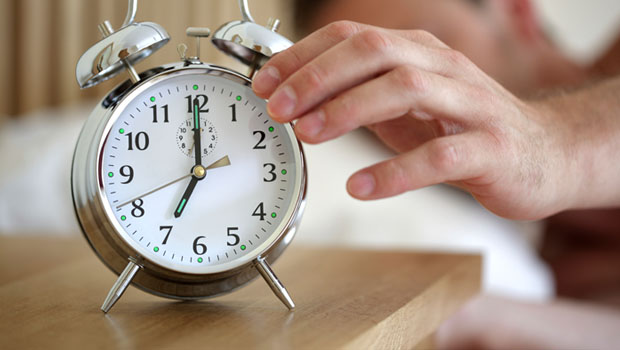5 Things that Increase Your Risk of Diabetes and Heart Disease
If you’ve already been diagnosed with diabetes or heart disease, your risk of developing the other is very high if you don’t take these steps

While you’ve likely heard over and over that type 2 diabetes rates are rising with no end in sight, the same can actually be said about heart disease. These two conditions often go hand-in-hand and encompass the same 5 aspects of your health:
- High blood sugar
- Large waistline
- High blood pressure
- High cholesterol
- High triglycerides
When at least 3 out of these 5 issues are present, a patient is diagnosed with “metabolic syndrome,” which is essentially an umbrella term for diabetes and heart disease.
Let’s take a closer look.
Metabolic Syndrome: Numbers you need to know
The Endocrine Society has established firm guidelines to help catch, diagnose and treat signs of metabolic syndrome sooner and more consistently.
The sooner you identify your risk factors, the more likely you can prevent the full development of type 2 diabetes or heart disease.
The following numbers for each aspect of health are a clear sign that your risk of diabetes and heart disease is high.
Your blood sugar:
- Fasting blood sugar levels above 100 mg/dL
- 2-hour oral glucose tolerance test above 140 mg/dL
- HbA1c at 5.7 percent or higher
Your waistline:
- For men — larger than 102 cm (40-inches)
- For women — larger than 88 cm (34.6-inches)
Your blood pressure:
- Higher than 130 mm Hg systolic (the top number)
- Higher than 85 mm Hg diastolic (the bottom number)
- Already taking a medication to treat high blood pressure
Your HDL cholesterol:
- For men: HDL (good cholesterol) below 40 mg/dL
- For women: HDL (good cholesterol) below 50 mg/dL
Your triglycerides:
- Above 150 mg/dL
- Already taking a medication to treat high triglycerides
What can you do about it? Fortunately, there are so many ways to improve these aspects of your health. It’s not easy, but it’s very doable with enough patience, dedication, and an open-mind to learn new and try new things.
Working to improve your numbers
The best part about preventing or treating metabolic syndrome is that improving one of these numbers inevitably improves all of them.
- If you lose weight and reduce your waistline, you’ll inevitably lower your blood pressure, your blood sugar, your triglycerides, and your cholesterol.
- If you take steps to improve your cholesterol, you’ll inevitably improve your blood sugars, your blood pressure, and so on.
These systems are all connected in your body and are all being stressed by similar health habits.
What are you eating?
There are too many diets out there these days to keep track of, and most of them are extreme, rigid, and strange.
Don’t let those distract you from the basics: EAT MORE REAL FOOD.
It’s simple, really: vegetables, fruits, whole grains, nuts, legumes, and lean animal proteins.
- Yes, you can eat less-than-healthy things like pizza and brownies and still improve your health, but those treats need to be one small part of the day rather than several parts of the day.
- Training your tastebuds to crave (and feel satisfied by) a snack of raw carrots and hummus instead of a couple of doughnuts doesn’t happen overnight. It’s a process, but you won’t start craving healthier foods until you start eating them more often.
- Make room for one treat each day (whether it’s bread or ice cream, etc.) and strive to clean-up your other meals, learn how to cook new things, and stick to the basics: more real food.
- An apple with peanut butter isn’t expensive, it doesn’t take time, and it’s pretty darn portable, too.
We often think salt and sugar are the main contributors to high blood sugars and high blood pressure, but heavily processed food overall is truly the culprit.
Focus on eating more real, fresh, whole food and you’ll vastly improve your health without any crazy rules or obsessive diets.
Get moving
You don’t have to run marathons, but you’ve gotta move that body at least 3 to 4 days a week. Simply walking 30 minutes a day after lunch will impact your metabolism and your insulin sensitivity for a full 24-hours after that walk.
There isn’t an easy way around this. You’ve got to make time for exercise.
The most common excuse to not exercise is a lack of energy, but the more you exercise, the more energy you’ll have. Think of that tired feeling after work as your body begging you to get up and move rather than wanting to go from your desk to your couch.
Eventually, you’ll start to crave the part of your day when you get to exercise!
Regular exercise is critical for improving your blood sugar, your blood pressure, and your waistline.
Stop drinking sugar
If you’re still drinking sugar-laden beverages on a daily basis, you’re fighting an uphill battle that you’ll likely never win.
- That applies to sugary drinks from Starbucks, bottles of juice, fruit smoothies, and soda.
- Simply cutting sugar out of your diet without making any other changes could lead to a 10-pound weight-loss and lower your average blood sugar significantly.
- The amount of sugar in one can of coke is as much as eating a bag of Skittles. If you’re consuming several cans of soda every day, not only are you rotting your teeth, you’re also creating and fueling an intense sugar addiction.
- Quitting soda for some may not be an issue of caffeine or habit, but of true addiction to sugar.
- We don’t think of quitting soda the way we think of quitting a narcotic, but you should expect to endure some intense headaches, jittering, and overall discomfort when you first try to skip that first serving of sugar.
Talk to your healthcare team about your sugar habits and your sugar goals! Get support. It won’t be easy.
Quit smoking
Cigarettes hugely impact your blood pressure and your blood sugars. Smoking cigarettes increases your risk of type 2 diabetes by 30 to 40 percent because the presence of nicotine in your bloodstream creates tremendous insulin resistance. And it lasts for hours and hours after you’ve finished that cigarette.
High blood pressure is often referred to as “the silent killer” because it’s easy to have no idea your blood pressure is dangerously high until you suffer the consequences.
A stroke, kidney disease, and heart attacks are all potential consequences of untreated high blood pressure.
Small changes make a big difference
Yes, there are people with type 2 diabetes for whom the disease isn’t going to go away by simply losing weight and improving your diet, but research continues to show that a significant portion of people with prediabetes and type 2 diabetes can prevent or reverse the disease by making changes in daily habits.
Start small — choose one aspect of your daily routine to focus on first — and tackle these two monsters (diabetes and heart disease) at the same time.




